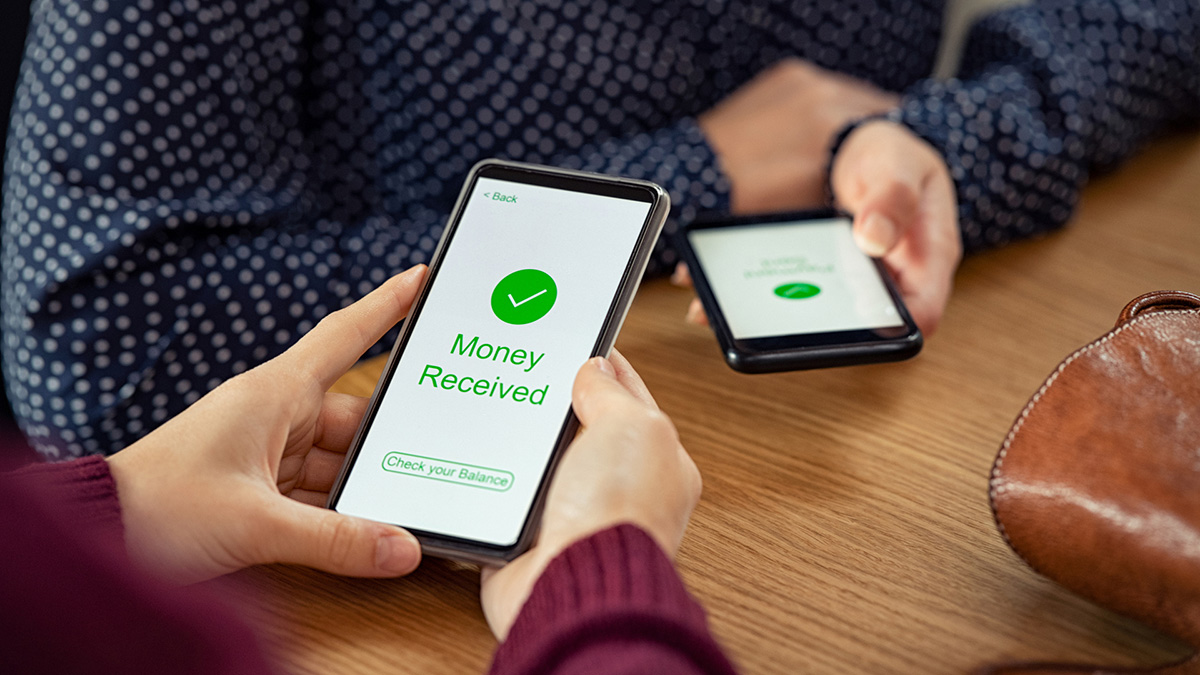

Finance
How To Calculate Seed Funding Amount
Published: January 17, 2024
Looking for ways to determine the right amount of seed funding for your finance-focused startup? Learn how to calculate seed funding amount and set your business up for success.
(Many of the links in this article redirect to a specific reviewed product. Your purchase of these products through affiliate links helps to generate commission for LiveWell, at no extra cost. Learn more)
Table of Contents
Introduction
Securing seed funding is a crucial step for startups looking to turn their ideas into reality. This initial funding provides the necessary capital to launch a business, develop a minimum viable product, and attract potential investors. However, determining the right amount of seed funding to seek can be a challenging task.
In this article, we will explore the process of calculating the seed funding amount for your startup. We will discuss the key factors to consider and provide a step-by-step guide to help you estimate the amount needed to kick-start your business successfully.
Seed funding plays a vital role in the early stages of a startup, providing the necessary resources to develop a product or service, conduct market research, and build a solid foundation for growth. It is important to thoroughly evaluate and plan for the funding amount required to avoid a shortfall or excess funds that could potentially hinder the progress of your business.
By understanding the factors that influence the seed funding amount and following a systematic approach to estimation, you can increase your chances of securing the right funding that will propel your startup towards success.
Understanding Seed Funding
Seed funding is the initial capital raised by a startup to transform an idea into a viable product or service. It typically comes from angel investors or venture capital firms who see the potential in the business concept and are willing to take a financial risk in exchange for equity or a stake in the company.
The primary objective of seed funding is to provide the necessary resources to conduct market research, develop a prototype or minimum viable product (MVP), and validate the startup’s business model. It allows entrepreneurs to test their ideas, prove their concept’s feasibility, and attract further investment in later stages.
Seed funding differs from other funding stages, such as Series A, B, or C, as it is usually secured at a very early stage when the startup has limited or no track record, significant market traction, or a substantial customer base. The investment decision is primarily based on the potential of the idea and the founders’ skills and expertise.
Seed funding can be acquired in various forms, including equity financing, convertible notes, or grants. Equity financing involves selling a portion of the company’s equity to investors in exchange for capital. Convertible notes, on the other hand, are debt instruments that convert into equity at a future financing round or milestone.
It’s important for startups to understand that seed funding is not just about the money. It often brings additional benefits such as mentorship, industry connections, and expertise from the investors. These invaluable resources can significantly contribute to the startup’s growth and success.
While seed funding is an exciting opportunity for startups, it’s crucial to recognize the potential challenges and risks associated with it. Some of these challenges include dilution of ownership, high expectations from investors, and the pressure to meet milestones and achieve profitability.
By understanding the nature of seed funding and being aware of the pros and cons, entrepreneurs can make informed decisions and navigate the funding landscape more effectively.
Factors to Consider
When determining the seed funding amount for your startup, several factors need to be taken into consideration. These factors will help you assess the financial needs of your business and ensure that you secure sufficient capital to support your initial operations and growth. Here are some key factors to consider:
- Business Model: Analyze your business model and identify the key components that require funding. Consider aspects such as product development, marketing and sales, operational expenses, and hiring talented individuals.
- Market Analysis: Conduct thorough market research to understand your target audience, competition, and market dynamics. This analysis will help you determine the financial resources needed for effective marketing and customer acquisition strategies.
- Development Costs: Calculate the costs involved in developing your product or service. This includes expenses for research and development, technology infrastructure, intellectual property, and prototyping.
- Operational Expenses: Estimate the ongoing expenses required to run your business. This includes office space, utilities, salaries, legal and accounting fees, software licenses, and any other costs associated with day-to-day operations.
- Marketing and Sales: Determine the budget required for marketing campaigns, branding, advertising, and sales efforts. Consider strategies such as digital marketing, content creation, social media advertising, and attending industry events.
- Team and Talent: Assess the human resources needed to support your business operations. Determine the costs associated with hiring skilled individuals, consultants, or outsourcing certain tasks.
- Milestones and Timelines: Define key milestones and timelines for achieving specific goals. This will help you estimate the funding required for each stage of development and set realistic expectations for investors.
- Contingency Buffer: Create a contingency buffer to account for unexpected expenses or delays. It’s advisable to have some extra funding set aside to tackle any unforeseen challenges that may arise during the early stages of your startup.
By carefully considering these factors, you can develop a comprehensive financial plan that accurately determines the suitable seed funding amount for your startup. It’s important to be realistic and ensure that the funding will adequately support your business goals and objectives.
Estimating the Project Expenses
In order to determine the seed funding amount for your startup, it is crucial to have a clear understanding of the project expenses involved. Estimating project expenses allows you to identify the financial resources required to bring your product or service to market. Here are some steps you can follow to estimate your project expenses:
- Research and Development Costs: Analyze the costs associated with research and development activities. This includes market research, feasibility studies, prototype development, and any necessary testing or experimentation.
- Product Development: Calculate the expenses involved in developing your product or service. This includes material costs, production costs, packaging, and any specialized equipment or technology required.
- Technology Infrastructure: Determine the costs of setting up and maintaining the necessary technology infrastructure to support your business operations. This includes hardware, software, servers, hosting, and cybersecurity measures.
- Intellectual Property: Consider the costs associated with protecting your intellectual property rights. This includes filing for patents, trademarks, copyrights, and any legal fees required to safeguard your unique ideas or inventions.
- Marketing and Advertising: Estimate the expenses involved in marketing and advertising your product or service. This includes branding, website development, online marketing campaigns, paid advertisements, and public relations activities.
- Operational Expenses: Calculate the ongoing operational expenses required to run your business. This includes office rent, utilities, insurance, salaries, employee benefits, legal and accounting fees, and any other administrative costs.
- Professional Services: Consider any professional services that may be required, such as hiring consultants, lawyers, or accountants. These professionals can provide valuable guidance and expertise in various aspects of your business.
- Contingency Fund: Set aside a contingency fund to account for unforeseen expenses or changes in the project scope. It is recommended to allocate around 10% to 20% of the total estimated expenses as a backup fund.
It is important to conduct thorough research and consult with industry experts or mentors to get a realistic estimate of project expenses. Take into account any local regulations, industry trends, and competitor analysis to ensure your budget is accurate and comprehensive.
By estimating your project expenses diligently, you will have a clearer understanding of the seed funding amount required to successfully bring your product or service to market.
Determining the Seed Funding Amount
Once you have estimated the project expenses, it’s time to determine the appropriate seed funding amount needed to support your startup. While the exact funding amount will vary depending on your business and industry, here are some key steps to help you make an informed decision:
- Total Estimated Expenses: Calculate the total estimated expenses by adding up all the costs identified in the previous section. This will give you a clear picture of the financial resources needed to launch and sustain your startup.
- Budget Allocation: Evaluate each expense category and prioritize them based on their importance and impact on your business. Allocate a portion of the total estimated expenses to each category to create a comprehensive budget.
- Market Factors: Consider the market conditions and industry trends. Assess factors such as the level of competition, consumer demand, and potential barriers to entry. This information can help you gauge the funding required to effectively penetrate the market and establish a strong presence.
- Investor Expectations: Understand the expectations of potential investors. These may include milestones or goals they expect your startup to achieve within a specific timeframe. Align your funding amount with these expectations to increase your chances of attracting investment.
- Valuation and Equity: Determine the valuation of your startup and the equity you are willing to offer to investors. This will influence the amount of funding you seek, as well as the percentage of ownership you are willing to give up in exchange for the investment.
- Financial Projections: Create financial projections that forecast the potential revenue, costs, and profitability of your business. Consider factors such as market size, growth potential, pricing strategy, and customer acquisition. These projections will help justify the funding amount you are seeking.
- Networking and Mentorship: Leverage your network and seek guidance from mentors or industry experts. Engage in discussions with experienced entrepreneurs who have successfully raised seed funding. Their insights and advice can provide valuable input on determining the appropriate funding amount.
It’s crucial to strike a balance when determining the seed funding amount. You want to ensure that you have enough capital to execute your business plan effectively, but also avoid diluting your ownership too much or seeking an unrealistic funding amount that may deter potential investors.
By following these steps and conducting thorough research and analysis, you will be better equipped to determine a suitable seed funding amount that aligns with your business needs and goals.
Conclusion
Calculating the seed funding amount for your startup is a critical step in securing the necessary capital to bring your business idea to life. By understanding the factors that influence the funding amount and following a systematic approach, you can ensure that you have enough financial resources to launch and sustain your startup successfully.
Throughout this article, we discussed the importance of understanding seed funding and how it differs from other funding stages. We explored the factors to consider, such as your business model, market analysis, development costs, operational expenses, and more. Estimating project expenses was highlighted as a crucial step in determining the funding amount, as it helps evaluate the financial resources needed to achieve your goals.
Finally, by considering market factors, investor expectations, valuation and equity, financial projections, and seeking guidance from mentors and industry experts, you can confidently determine the appropriate seed funding amount for your startup. It’s important to strike a balance between adequately funding your business and maintaining a realistic and attractive proposition for potential investors.
Remember, seed funding is not just about the money. It’s an opportunity to leverage the expertise and network of investors who believe in your business idea. Take advantage of the additional benefits that come with seed funding, such as mentorship and industry connections, to accelerate the growth and success of your startup.
In conclusion, carefully analyzing your project expenses, understanding the market landscape, and aligning your funding goals with investor expectations will help you secure the right seed funding amount. With the right financial resources in place, you can focus on building and scaling your startup, turning your vision into a thriving business.














